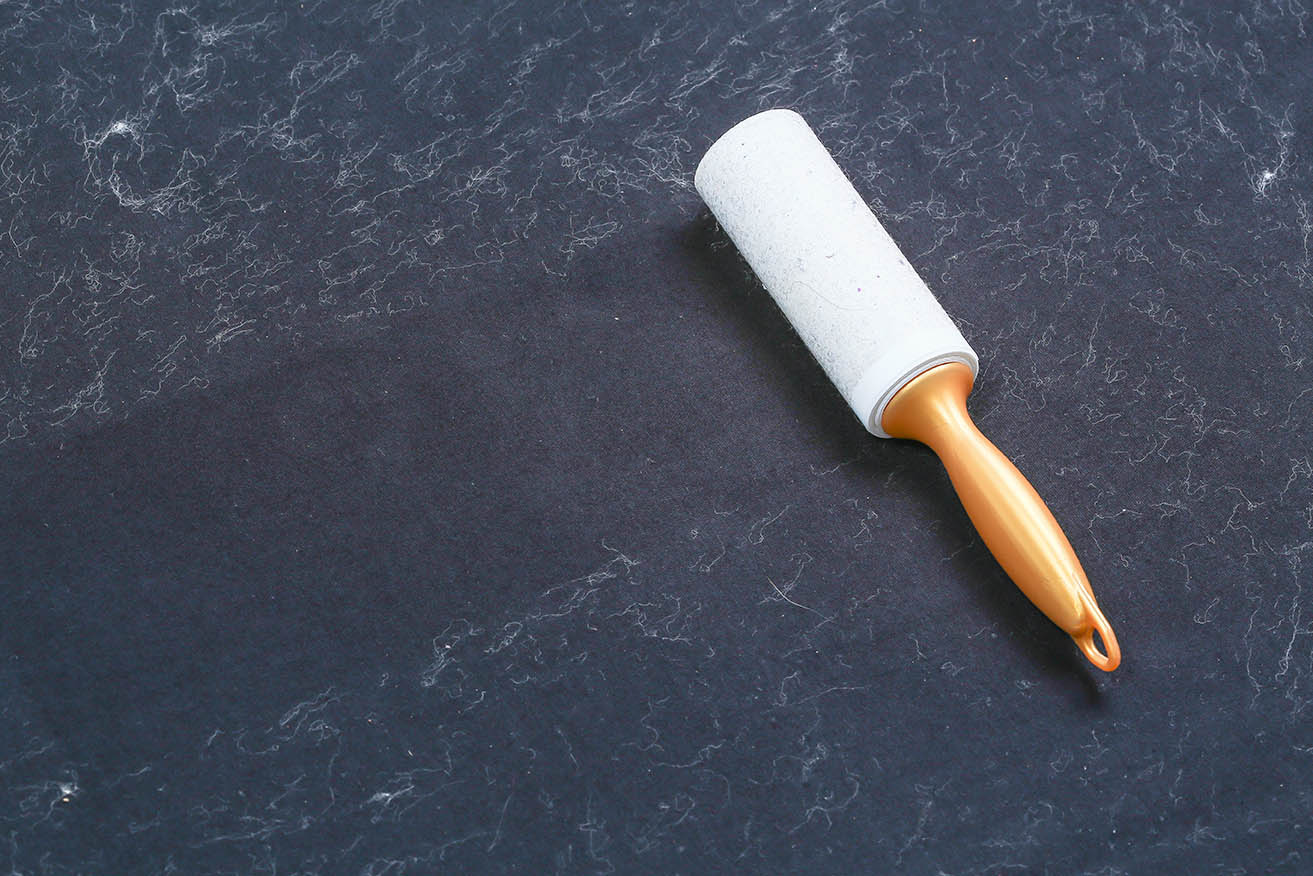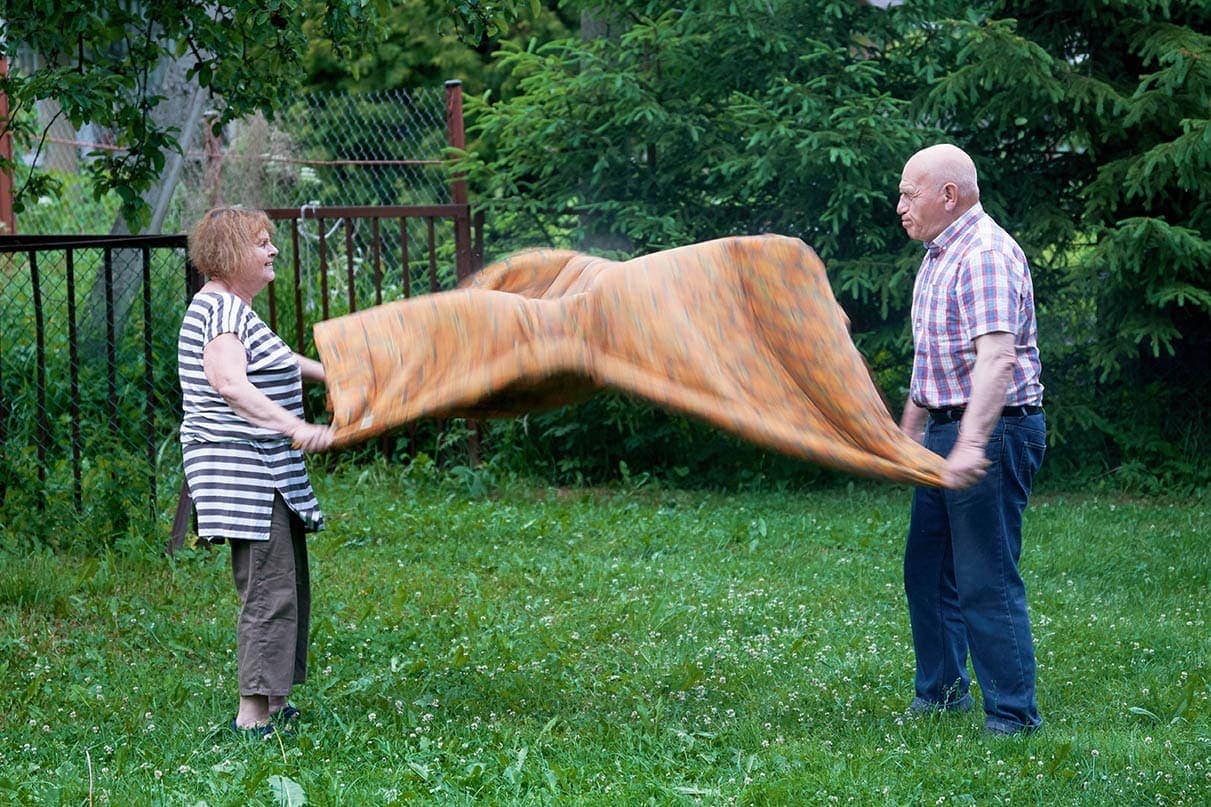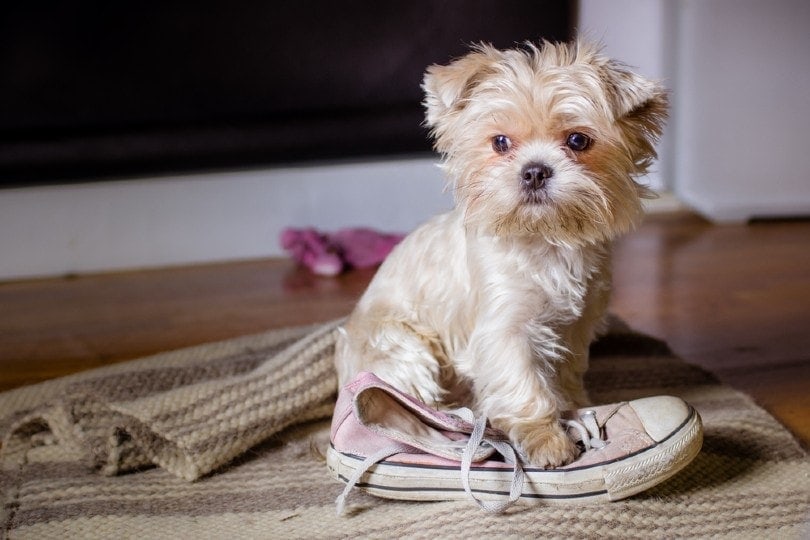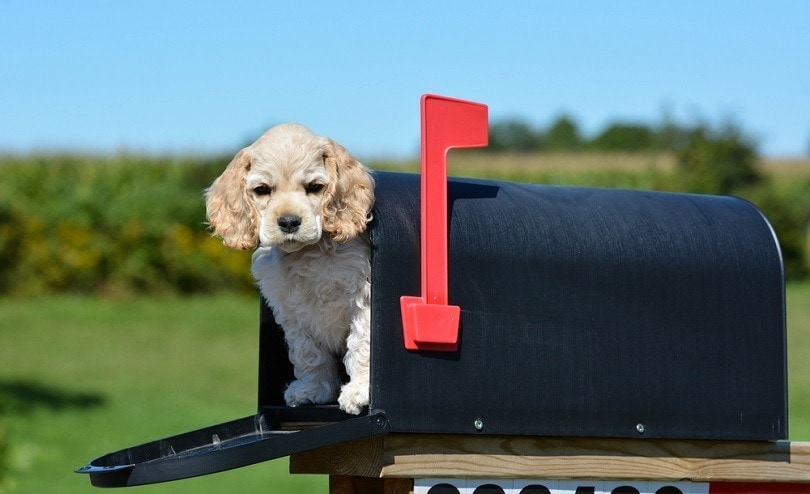If your canine sleeps on your bed, you’re bound to end up with dog hair all over it. No one wants to sleep in a pile of dog hair. However, detangling all the hair from your bed can be difficult, if not impossible.
Luckily, you can do a few things to remove the hair without much of a fuss. In this article, we’ll take a look at some of the most effective ways of removing dog hair from your mattress and blankets.
Top 8 Ways to Remove Dog Hair From Beds:
1. Use a Lint Roller

Lint rollers are probably one of the most common options for removing dog hair from your bed. There are lint rollers available at most convenient stores, so you shouldn’t have trouble finding one.
How these tools work is relatively straightforward. The roller is wrapped in paper, which is sticky on the outside. When you roll this paper over a bed, the stickiness brings the hair with it. It’s a practical and straightforward solution, which is one reason why it is so popular.
However, lint rollers aren’t too useful on all types of hair. Longer hairs seem to give it the most trouble. If you have a long-haired dog, like a Husky, you may want to consider using a different method, as the lint roller may not be able to detangle the hair from the blanket fibers effectively.
Furthermore, lint rollers stop working eventually, as they run out of sticky paper. Therefore, you will have to keep buying more. While this usually isn’t that big of a deal, the cost can add up quickly if you have to de-hair your bed every day.
2. Use a Rubber Glove
Rubber gloves are similar to a lint roller, but they are a reusable solution. They can help you save money in the long run, as you’ll only ever need to purchase one.
Using a rubber glove is relatively simple. You put on the rubber glove and then rub your hand across the bedding. The rubber makes the furball up, which makes it much easier to discard.
There are also a few rubber pet hair removal tools on the market, which work very similar to these gloves. Anything made with rubber will have the same effect, including rubber window squeegees, which are also reasonably good at removing dog hair.
3. Shake the Blanket Outside

This is a classic method that has likely been used for centuries. Take your blanket off your bed and shake it off outside. Often, this will remove quite a bit of the hair. However, this method only works if you have easy access to somewhere outside to shake out the blanket. Plus, this method won’t likely be able to remove all of the hair.
This works best to remove a large amount of dog hair before moving on to another method to remove the rest.
4. Try a Damp Sponge

If you don’t have any special tools lying around, this is an easy method for removing dog hair. Hair will stick to moisture surfaces. Therefore, if you run a damp sponge over your bed, you will remove much of the hair.
This is a method you can do over and over again. Remove the hair whenever the sponge appears to be full, and then the sponge is completely reusable.
Using a damp sponge is pretty straightforward. The only point of contention is that you risk getting your bed and blankets wet, which can be a problem when you sleep in it again. However, if you’re removing hair in the morning after you’ve slept, this method may be a bit more practical. It is important to ring the sponge out as much as possible to prevent water from dripping onto your bed.
5. Use a Vacuum

Many vacuums come with special attachments that are designed to vacuum furniture. While couches often see most of these attachments, you can use them on your bed as well. This method should be quite useful, assuming you have a good vacuum on standby.
However, you do have to haul out your vacuum. Depending on the size of your bed, you may have difficulties getting the hose to reach over your bed. In some cases, the annoyance may not be worth it. In this case, you can use a different method instead.
6. Try Dryer Sheets
Dryer sheets are made to attract hair. For this reason, you can grab a few and run them over your blankets, picking up hair as you go. Once the dryer sheet is full of hair, throw the sheet away and grab another one. You will have to purchase more dryer sheets, but they are generally pretty inexpensive.
You can also use dryer sheets to pick up hair off of other surfaces, like your couch. Some people also use dryer sheets to remove the hair from their dogs, though the scents on your dryer sheets can be transferred onto your dog’s hair, which they may lick up while grooming. For this reason, we don’t recommend using the dryer sheet on your dog directly.
7. Add Fabric Softener
Similar to dry sheets, fabric softener is also formulated to remove dog hair from clothes. You can water it down in a 1-to-1 ratio in a spray bottle and then use the mixture on your bed to remove the dog hair. This method doesn’t necessarily work by itself. It works best when combined with a rubber glove or another rubber tool. However, it does make removing the hair far easier than it may be otherwise.
If you’re having trouble getting up all your pet’s hair, then try adding some fabric softener to the mix.
8. Use Pumice (or another, similar rock)

Pumice is a type of volcanic rock. It’s created when magma is sprayed into the air and quickly hardens. Because of this, the rock has lots of air holes in it. This rock is so full of air holes that it floats in water! All these holes can come in handy when it comes time to remove dog hair from your bed.
The holes can easily trap and bring the hair with it. It’s pretty simple to use; you rub it over whatever surface you’re looking to remove the hair from. When the hair begins to bunch up on the rock, you can remove it with your hands and keep using the rock. It’s a pretty straightforward system.
There are a few of these rocks and similar tools available commercially, like this one by Fur-Zoff. It is made out of foamed recycled glass to resemble pumice. However, you could also purchase a pumice rock. Nothing has to be done to the rock to make it pick up hair. It just does it naturally.
The only problem is that the rock can be a bit sharp in some places. This can tear more delicate materials, so we don’t recommend using it on anything that may be easily pulled apart.
Prevention is Important
If your dog is getting massive amounts of hair on your bed every night, it may be a sign that you need to up your brushing routine. Any hair you remove through brushing will be hair that doesn’t end up on your bed.
Some dogs may need to be brushed more often during specific periods. Most dogs that shed regularly go through certain stages where they will “blow their coat.” In other words, they begin shedding much more than usual. Usually, this happens whenever the seasons begin changing, though the shedding itself is tied to hormones – not the actual seasons.
Dogs that are not fixed tend to shed more during these periods than those that are. This is because their hormones vary more than a fixed canine. When their hormones go too far in one direction, they will begin to shed more. This is natural and healthy among breeding dogs, but it may be unnecessary for pet dogs.
Therefore, you may have to brush your pet more during specific periods to keep your bed mostly pet hair-free—plan to adjust your routine accordingly as you notice more hair on your bed and around your home.
If your pet is especially furry, you may want to use the services of a professional groomer. They can groom your dog when they’re blowing their coat and also trim them if necessary.
Of course, there are many breeds you should not trim. Just because your dog is hairy doesn’t mean you should trim all that hair off. Some dogs need it for temperature regulation. Without it, they may be more prone to hypothermia or hyperthermia, as they will not regulate their temperature appropriately.
Dog Hair & Your Bed: Which Removal Method Should You Use?
With eight methods to choose from, there are many ways you can potentially remove hair from your bed. Which method you choose will likely depend mainly on what you have on hand, as well as which one seems to work best on your dog’s hair. Some dogs have different hair types than others, making specific methods work better for hair removal than others.
We recommend taking the time to experiment to figure out which ones work best for you. Many of these methods are exceedingly inexpensive, so there is little reason not to try a few out and see which one you prefer.
Featured Image Credit: senee sriyota, Shutterstock





